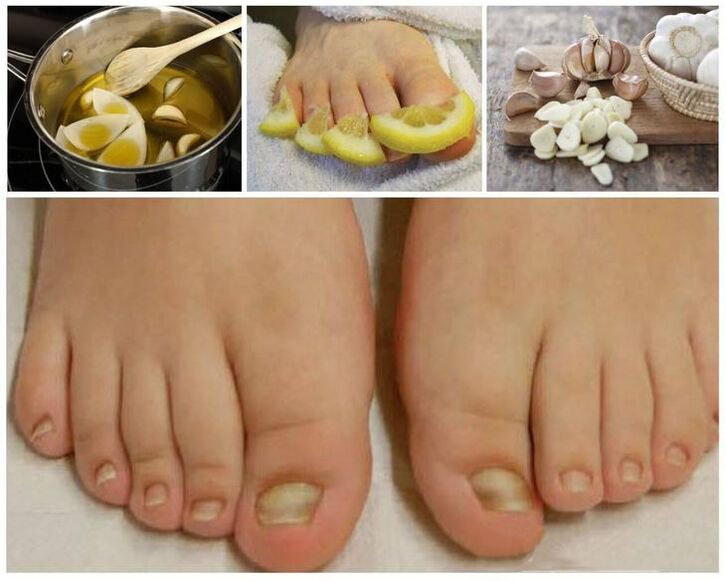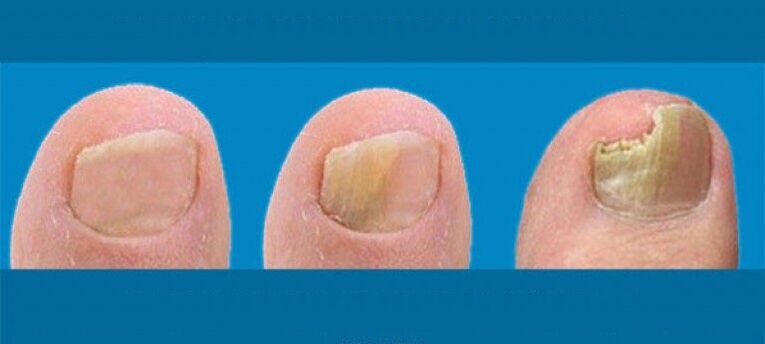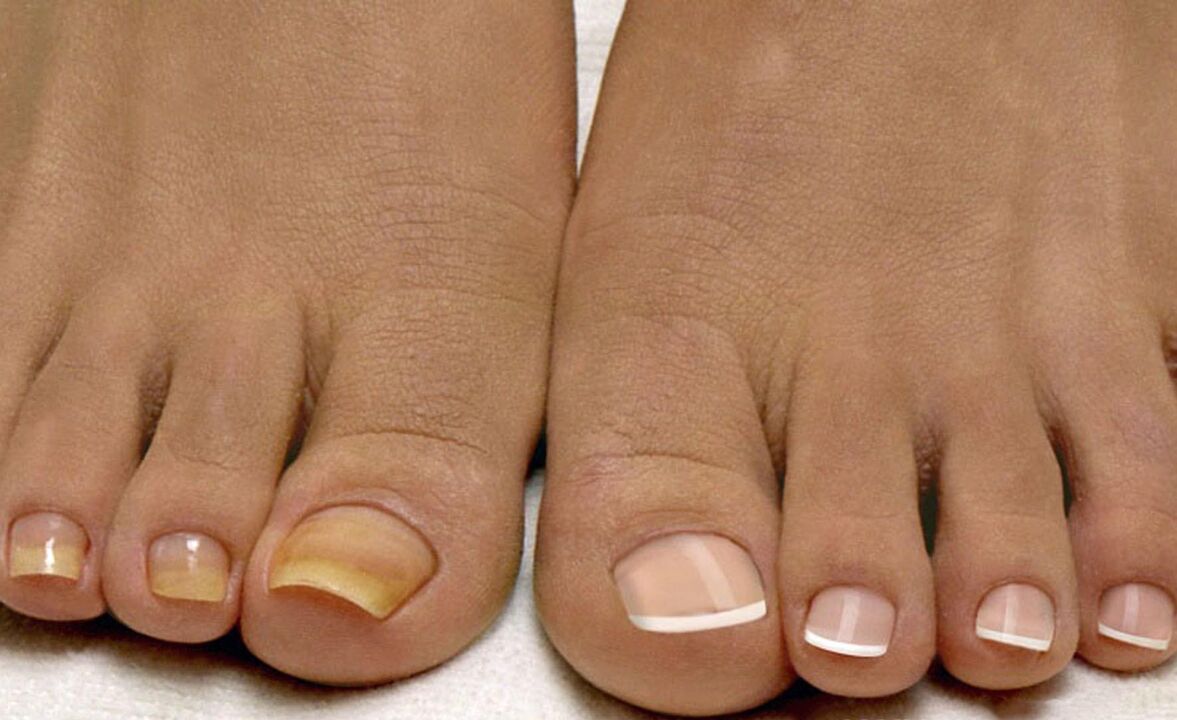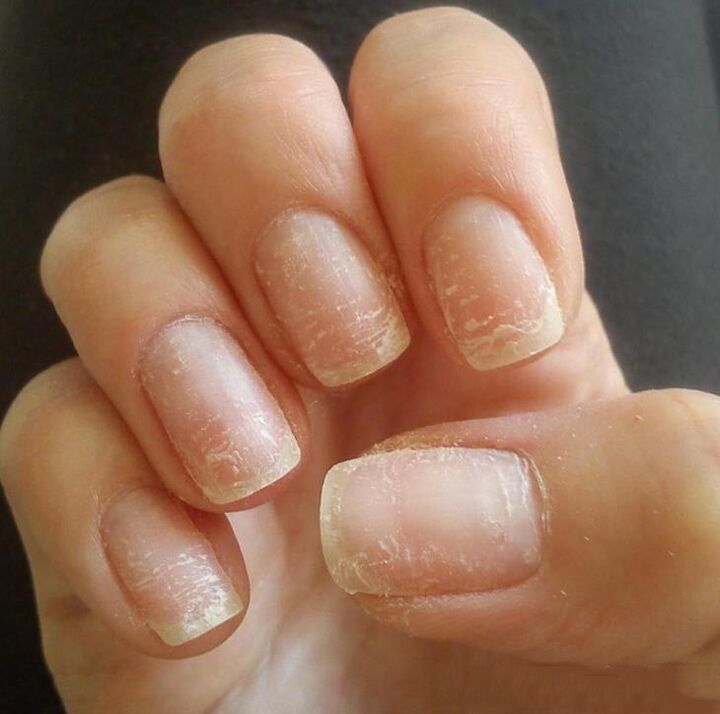
Fungal infections will definitely affect any part of the body.Like other bacteria and microorganisms, fungi are always present in the human body and have a strict balance in his skin.When the number of mushrooms increases for various reasons, infection may begin.
Onychomycisois, also known as the fungus Onichia, is a fungal infection that affects the nails on the legs or hands.It develops slowly, so it is difficult to notice any signs of the disease.
Why develop?
Fungal infection of nails begins at the moment when the number of fungal infections increases dramatically inside, below or on the nails.Fungi prefer warm and humid environments, so in any suitable environment, they begin to reproduce in large quantities.Nail fungi occurs due to the same fungi that causes eczema, mycomycosis and lichen cleavage.
Mushrooms live quietly on absolutely anyone's body and may cause nail infections.If you are in contact with someone with this disease, you can spread it to you.According to the American Academy of Dermatology, fungal infections often affect the legs on the legs rather than on the arms, because fingers are more common in warm and humid environments.
If you are used to manicure and pedicure in the cabin, it is worth finding out how the employee sanitizes the tools and how often he does it.Goodbye to manicure and pedicures, such as nail documents and scissors, can be the source of infection, and anyway, it will be transmitted to another person without proper disinfection.
Who can be infected?
There are many reasons for fungal infection of nails, and each nail is treated in its own way.Most of these reasons can be prevented naturally, but some factors can greatly increase the risk of this infection.The highest risk of developing nail fungi is:
- They suffer from diabetes;
- Suffering from diseases that weaken blood circulation;
- Over 65 years old;
- There are elevated nails;
- Visit the public bathroom, swimming pool;
- Nail injury;
- Skin around the nails is injured;
- The legs are constantly wet or sweating.
- Weak immune system;
- They wear narrow, narrow shoes such as tennis shoes and boots.
Fungal infections are more common in men than in women, while infections are more common in older people than in children.If someone gets sick with fungus, it is likely to be there in the future.Older people are at the greatest risk of developing this infection, because blood circulation worsens with age, and the slower the change of nails and thicker it becomes.
What does nail fungus look like?
Fungal infections can immediately affect part of the nail, the entire nail, or several nails.
Visible signs

The clear symptoms of nail fungus are:
- Nail stratification is called pure hyperembryonic disease;
- The white or yellow stripes on the nails are called lateral eight-spine disease;
- The end of the nail or corner, which is called a distal tumor disease;
- There are too many white spots on the nails, and then the holes are still there;
- Yellow spots appear near the nail hole, which is called proximal muscular atrophy.
- The loss of nails.
General logo
Common symptoms of fungal infection were considered:
- Deformation of the nail plate, the nails are not in their position.
- The unpleasant smell of infected nails;
- Shaky or thickened nails.
How to find out if I have nail fungus?
The only way to confirm the diagnosis is to consult a doctor, as some other infections can also affect the nails and have similar symptoms to the fungus.In this case, scratches are usually made from the nails, which are sent to the lab for detailed analysis and clarification of the diagnosis.
When to see a doctor?

In most cases, nail fungi are considered a pure cosmetic problem.However, in some people, fungal infections can lead to serious complications.Therefore, in diabetic patients, nail fungi can further lead to foot ulcers or other leg problems.According to a 2012 study, chronic nail fungus on the legs is considered one of the main risk factors and one of the key conditions for bacterial fat ribose in the legs.
Therefore, if you have diabetes or have a weak immune system, you should not use home remedies to treat nail fungi.Please contact your doctor to help you understand how to treat fungi on your legs and how to treat them.
How to heal nail fungus on your feet?
Overcomplex drugs are generally not recommended for treating fungal nail infections because they do not provide reliable results.Instead, your doctor prescribes oral antifungal medications.These medications are very effective, but have many side effects on stomach disorders and dizziness due to skin and jaundice problems.
You can use other antifungal agents, such as antifungal varnish or nail base.It is applied to nails in the same way as regular nail polish.Depending on the type of fungus and the extent of damage to the nail plate, the tool may have to be used for several months.
Unfortunately, treatment cannot quickly and completely get rid of fungal infections.In almost half the case, the nail fungus returns again.Complications are not ruled out.So, perhaps many people are more likely to resort to traditional medicine.
Folk remedies for fungi
The fungus on the nails on the legs is not wanted to be seen on the feet at all, especially in the summer of the beach season.Therefore, we decided to collect 10 most popular and effective traditional medicine methods to learn how to treat nail fungi on the legs.
Snake Highland Extract

Snake Highlander Extract is a natural antifungal agent.The Highlanders of the Snake are plants that point to the sunflower family.A study conducted in 2008 showed that the extract was also effective on the nail fungus on the legs, as a ring-like drug prescribed by the prescription drug.In order to get rid of fungal infections in your legs in this way, you need to follow the following protocol: Apply the extract to the affected area twice every three days, the second month of the week, within 1 time per third month of the week.
Tea tree oil
Tea tree oil, also known as Melaleuka, is an essential oil that has antifungal and antiseptic effects.It is also recommended for the treatment of nail fungi.You just need to apply tea tree oil directly to your aching nails twice a day with a cotton swab.
Organo oil
Regular oil contains thyme.Timore has antifungal and antibacterial effects.To treat fungi on the nails of your legs, apply oil twice with a cotton swab.Some people use regular oregano oil with tea tree oil.Both products have powerful effects and can cause irritation and allergic reactions, so combining these oils is not recommended.
Olive slice extract
The active substances in olive extracts are believed to have antifungal, antibacterial and immune-modulating effects.You can apply olive paper extract directly to the nail fungus or drinks in capsule form.Although treatment with capsules is considered more effective than using olive oil extracts.Take 1-3 capsules with food 2 times a day.Drink a lot of fluids throughout the treatment.
Ozone oil

Ozone oils (such as olives and sunflowers) are obtained by gaseous ozone saturation.According to a 2011 study, the effect of low concentrations of ozone in a short period of time kills many microorganisms such as mushrooms, yeasts and bacteria.In another study, sunflower oil from ozone was found to be more effective in treating fungal infections of nails on the legs than ketoconazole antifungal drugs sold according to prescriptions.
Treat the fungus with odorous oil on the nails on the legs and treat the nails twice a day.
vinegar
There is no scientific evidence that vinegar helps treat fungi.However, this is a fairly safe home remedy you can try.To do this, use vinegar to bathe the leg with warm legs and dilute 1 part of vinegar in 2 parts of water.The process should be performed for 20 minutes a day.
Oral freshener
The composition of fresh agents includes menthol, thymeol and eucalyptus with antibacterial and antifungal properties.Maybe that's why it's so popular among nail fungi on the legs.You just need to hold the problem foot in a basin with freshener for 30 minutes.The process is carried out every day.
garlic

As you know, garlic has antifungal and antibacterial effects.To get rid of the fungal infection, pinch the chopped garlic cloves onto the nail for 30 minutes every day.If you don't like this scent, you can try garlic capsules.Follow the instructions strictly.
Adjust diet
Our health depends on what you eat.The more useful the food you eat, the more likely your body is to cope with various adverse factors and diseases, including nail fungi.
Eat foods necessary for normal function, i.e.:
- Yogurt rich in probiotics;
- Enough protein to achieve normal nail growth;
- Iron is enough to prevent the vulnerability of the nails;
- Food, rich in essential fatty acids;
- Foods rich in calcium and vitamin D (low-fat dairy products).
In this case, home remedies may be more effective than the drug released than prescribed based on mild and moderate stages of the disease process.Obviously, traditional medicine has fewer side effects, but its effectiveness has not been scientifically proven.Many factors should be considered when treating fungal infections of nails, such as penetration of nails, the severity of the disease, and general health status.

Treatment with traditional medicine is usually longer than treatment with medication.The first result may only appear a few months later.Normally, the question returns again.
How to prevent fungal nail infection
There are only a few simple changes in your lifestyle that will protect you from this serious and annoying infection.Take good care of your nails, cut them on time and keep them clean.Try not to harm the skin around the nails again.If your hands are in contact with water frequently, wear rubber gloves.
Here are some tips on how to protect yourself from fungi:
- Regularly use antifungal sprays and powders;
- Wash your hands after contacting infected nails;
- Dry your legs after shower, especially the area between your fingers;
- Manicure and pedicure in a proven salon;
- Use your tools only for manicure and pedicure;
- Wear socks during the season to prevent the skin on the legs from flooding;
- Don't be barefoot in public places;
- Reject artificial nails and apply them with varnish.
What are your expectations in the future?
Don't expect immediate results.In some people, treatment may not help immediately and require several courses or alternative medications.This fungal infection is considered curable only if new nails grow without signs of fungal.But this does not guarantee that fungal infection will no longer recover.In more advanced cases, nails are often infected with fungi and must be removed.
The main complications of fungal infection are:
- Reinfection;
- Remove infected nails over and over again;
- Bleaching of nails affected by fungi;
- The infection spreads to other parts of the body, even in the blood;
- The development of bacterial skin infections, called fat.
Regardless, you need to consult a doctor, especially if you have diabetes and nail fungus on your legs.People with diabetes are at great risk of serious complications, so don’t waste time and make an appointment with a doctor.

















